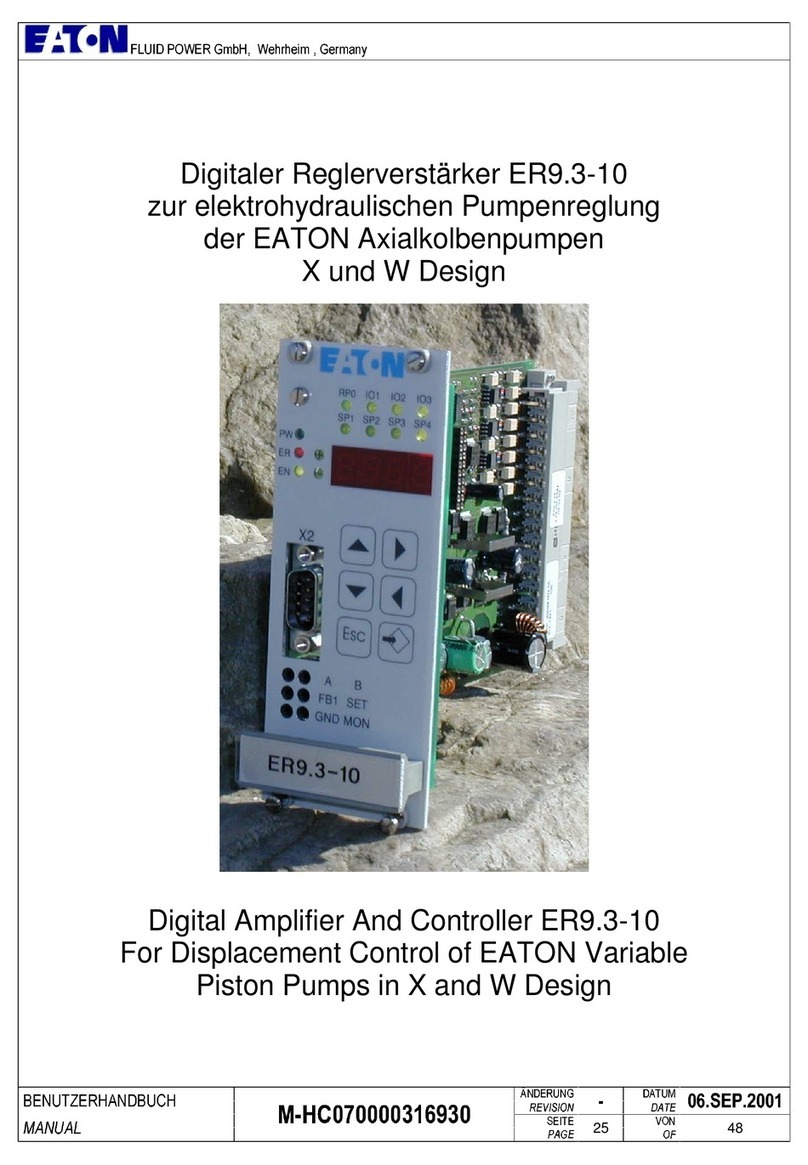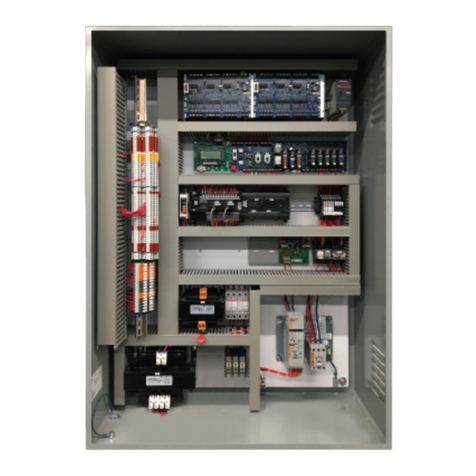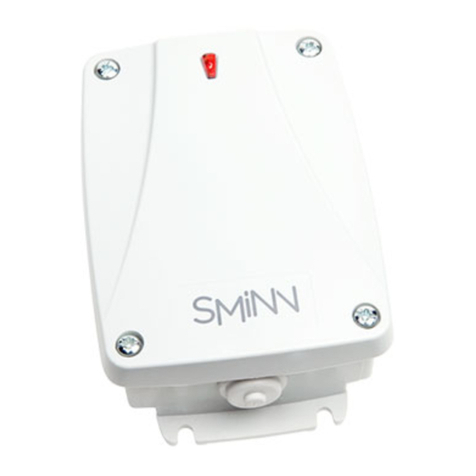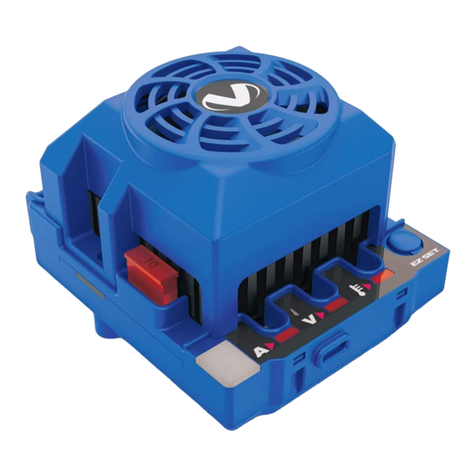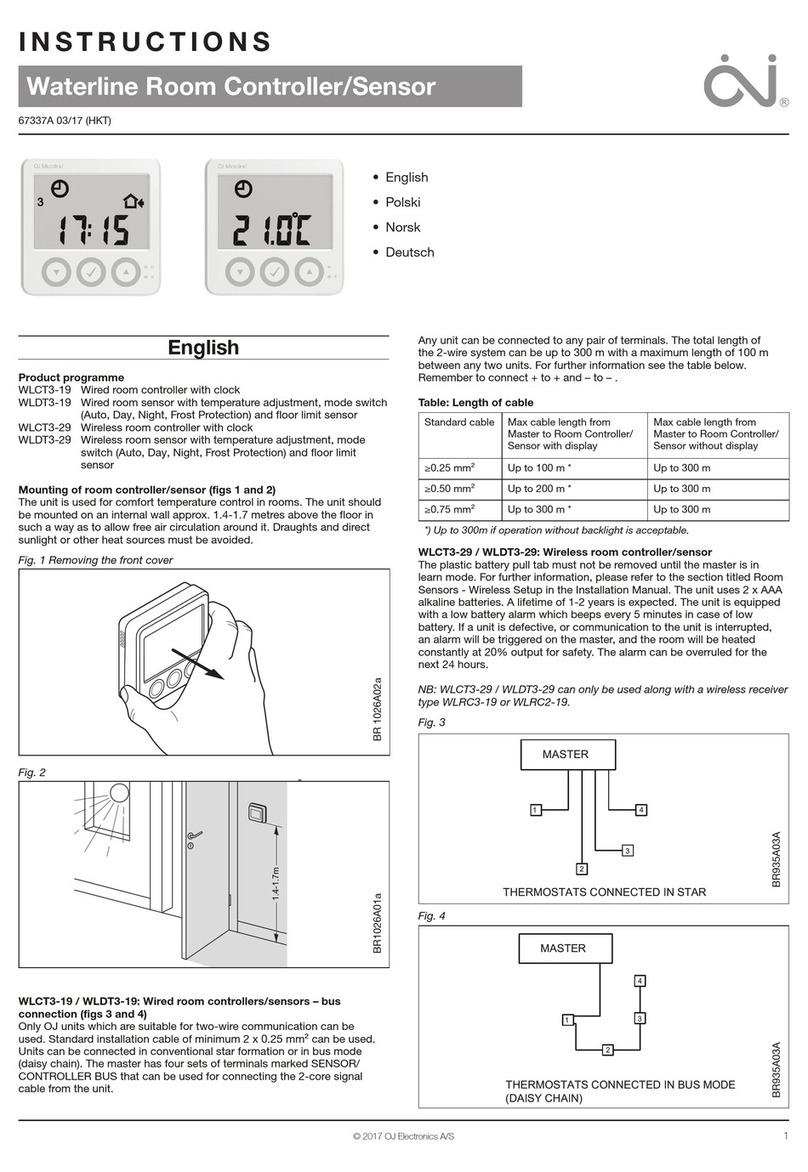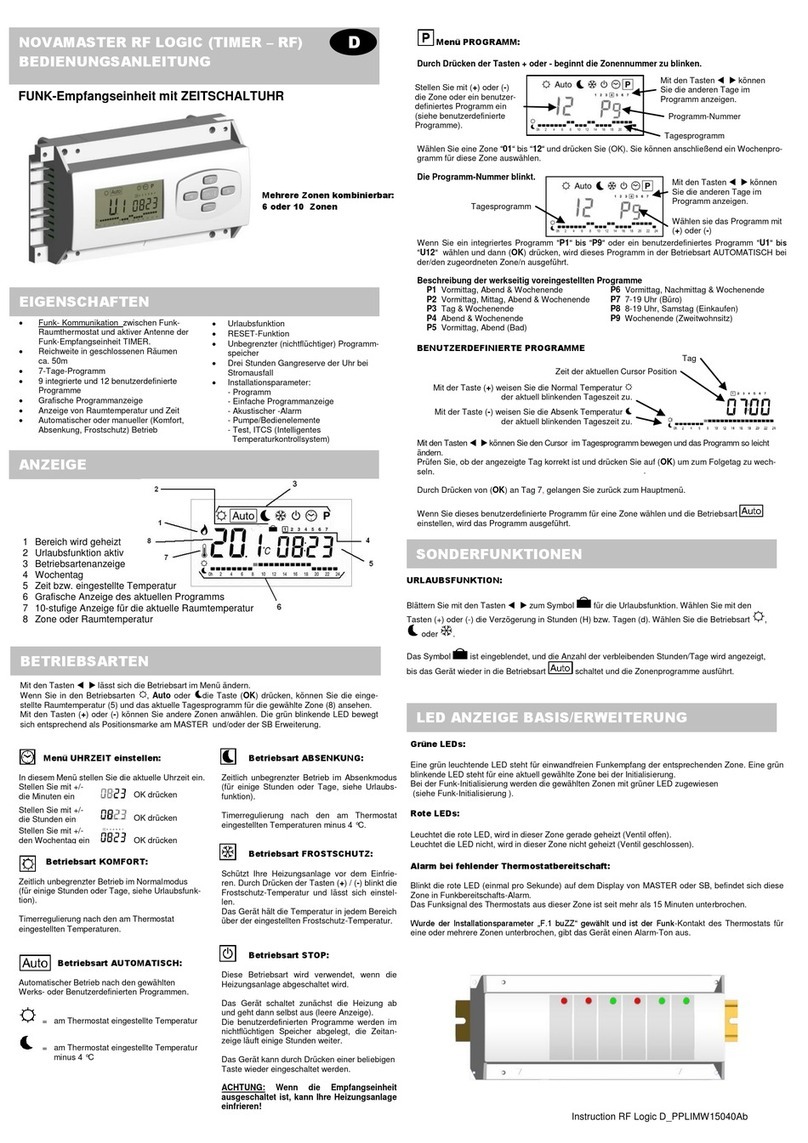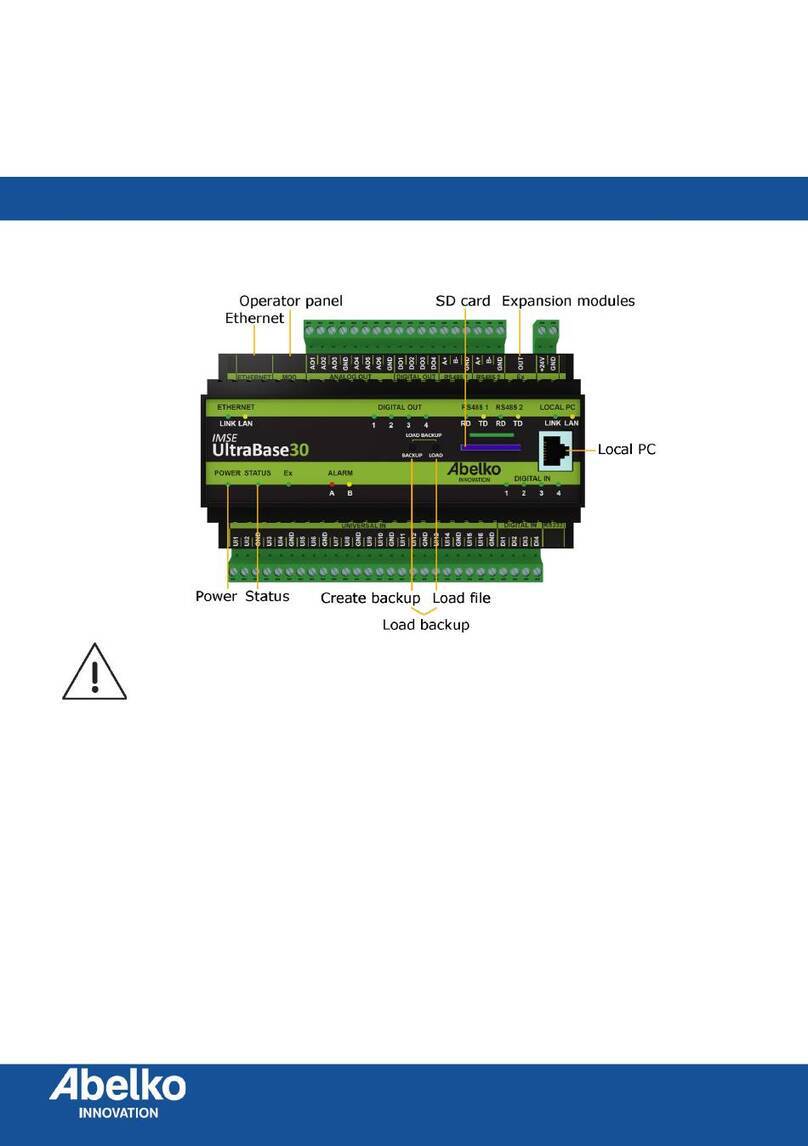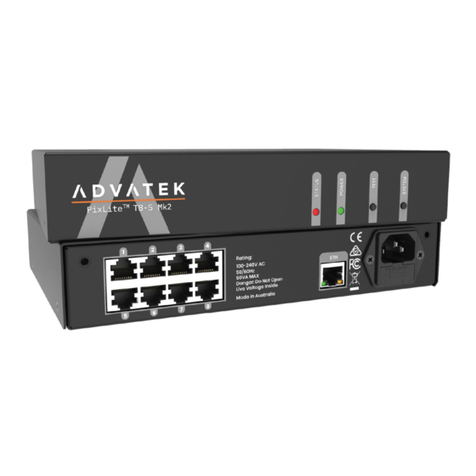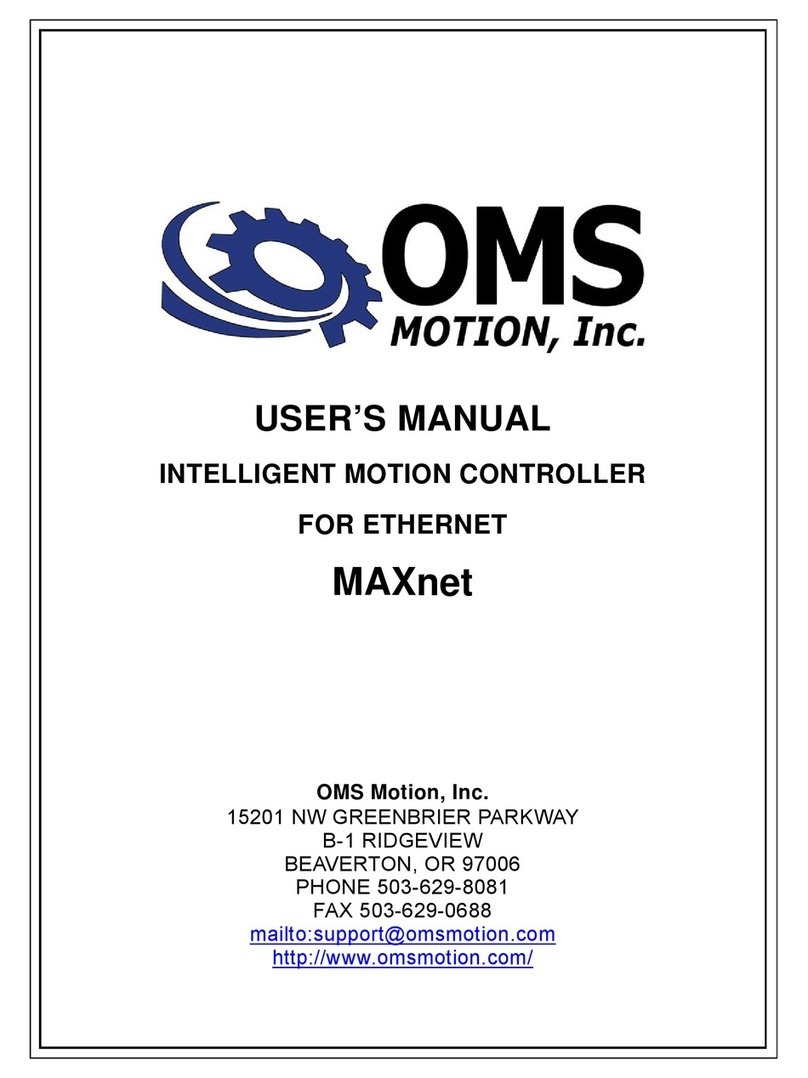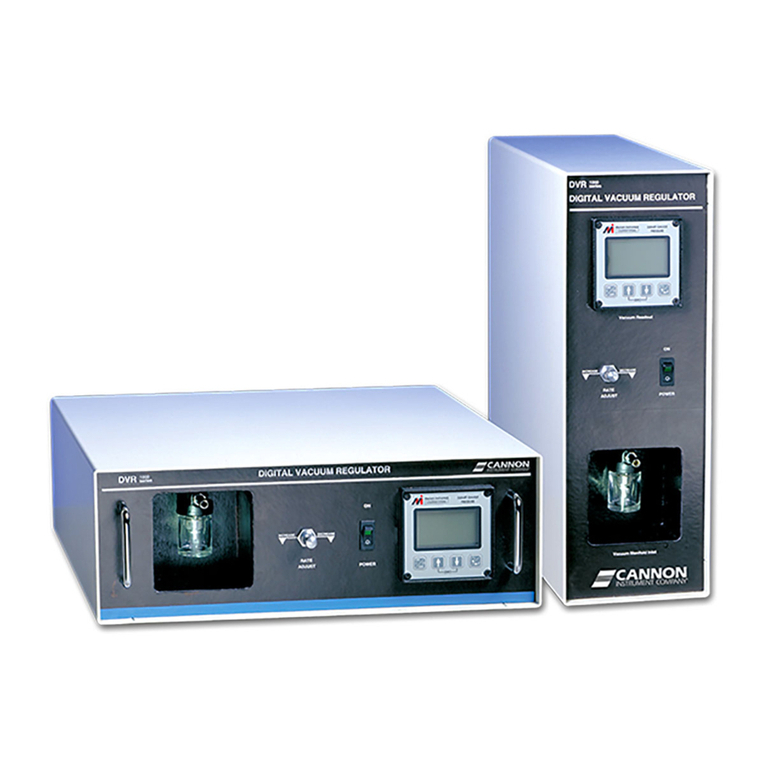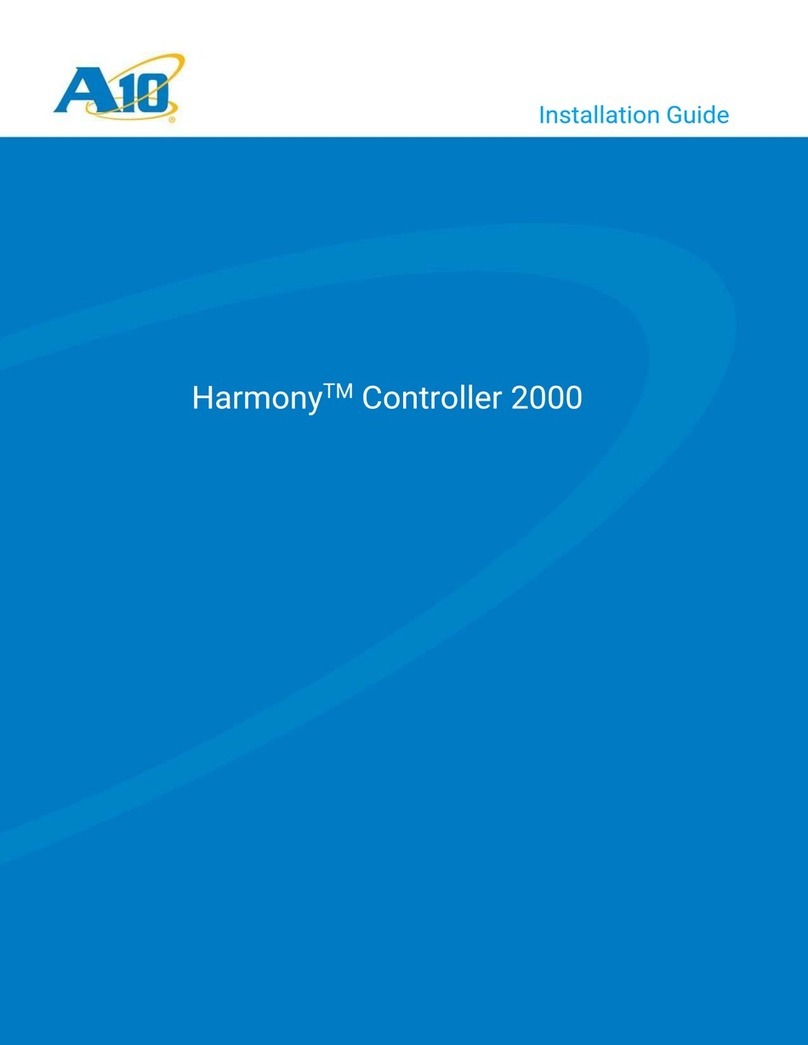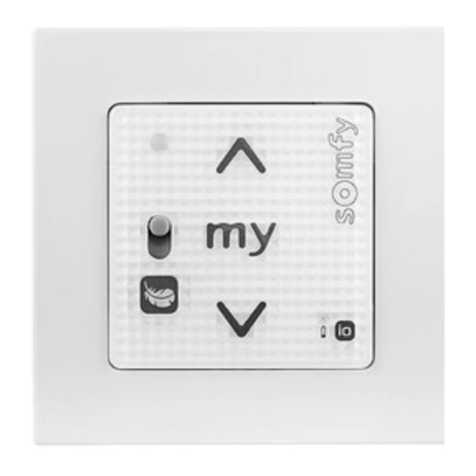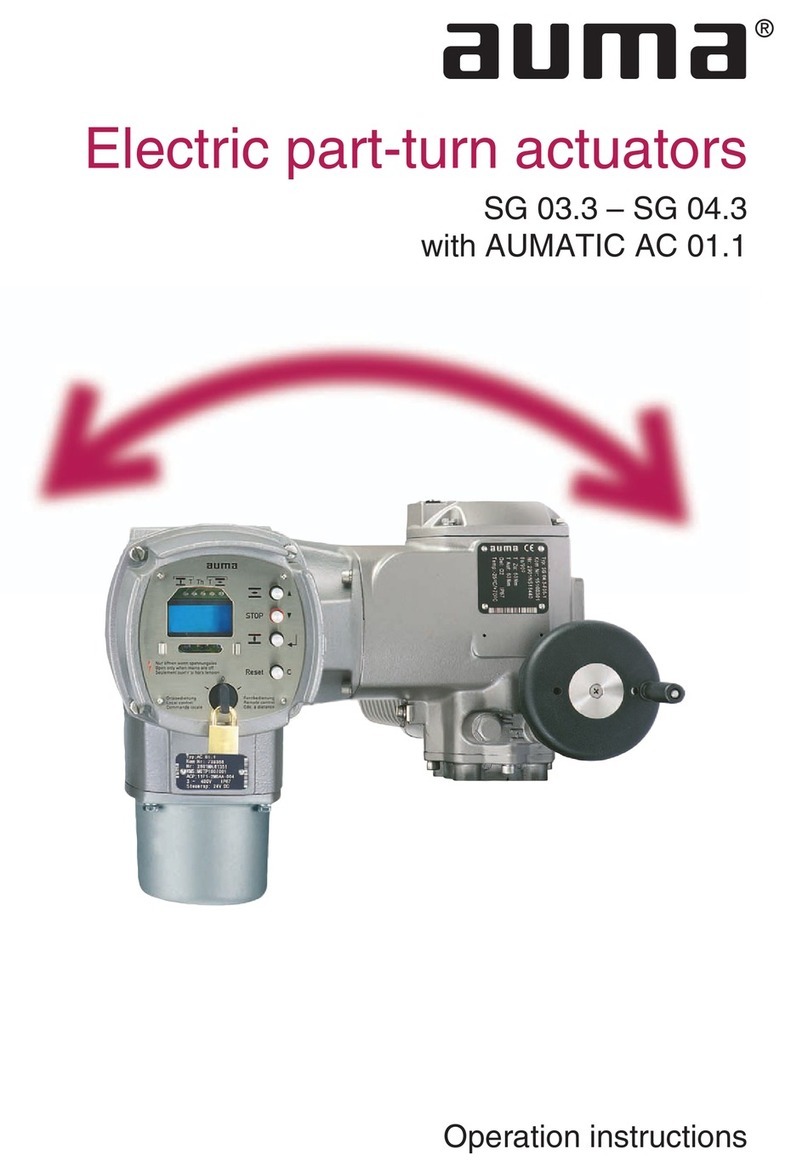Mercoid Series MPC User manual

Bulletin L-20
MERCOID
A Division of Dwyer Instruments, Inc.
P.O. BOX 258 • MICHIGAN CITY, INDIANA 46361, U.S.A.
Phone: 219/879-8000 • Fax: 219/872-9057
Series MPC Pump Controller
Installation and Operating Manual
FR # MI-443247-00 Rev. 3
L-20:L-20 9/30/10 11:08 AM Page 1

SPEC
Input
Input
Outp
Cont
Powe
132 t
Powe
Accu
Disp
Disp
Mem
Seria
Amb
F (40
Weig
Fron
Loop
Seal
Over
Alarm
Set P
Powe
Temp
Com
Norm
Isola
Stora
Agen
Modbu
1
CONTENTS
Dimensions . . . . . . . . . . . . . . . . . . . . . . . . . . . . . . . . . . . . . . . . . . . . . . . . . . . . . . . . . . . . . 1
Specifications . . . . . . . . . . . . . . . . . . . . . . . . . . . . . . . . . . . . . . . . . . . . . . . . . . . . . . . . . . . 2
Getting Started . . . . . . . . . . . . . . . . . . . . . . . . . . . . . . . . . . . . . . . . . . . . . . . . . . . . . . . . . . 3
Model Identification . . . . . . . . . . . . . . . . . . . . . . . . . . . . . . . . . . . . . . . . . . . . . . . . . . . . . . . 3
Installation . . . . . . . . . . . . . . . . . . . . . . . . . . . . . . . . . . . . . . . . . . . . . . . . . . . . . . . . . . . . . . 4
Wiring. . . . . . . . . . . . . . . . . . . . . . . . . . . . . . . . . . . . . . . . . . . . . . . . . . . . . . . . . . . . . . . . 5-7
Front Panel Functions . . . . . . . . . . . . . . . . . . . . . . . . . . . . . . . . . . . . . . . . . . . . . . . . . . . 8-9
Home Display . . . . . . . . . . . . . . . . . . . . . . . . . . . . . . . . . . . . . . . . . . . . . . . . . . . . . . . . . . . 9
Security Level Selection . . . . . . . . . . . . . . . . . . . . . . . . . . . . . . . . . . . . . . . . . . . . . . . . . . 10
Lead/Lag Operation . . . . . . . . . . . . . . . . . . . . . . . . . . . . . . . . . . . . . . . . . . . . . . . . . . . . . 11
Seal Failure Operation. . . . . . . . . . . . . . . . . . . . . . . . . . . . . . . . . . . . . . . . . . . . . . . . . 11-12
Over Temperature Operation. . . . . . . . . . . . . . . . . . . . . . . . . . . . . . . . . . . . . . . . . . . . 12-13
Analog Retransmission Operation . . . . . . . . . . . . . . . . . . . . . . . . . . . . . . . . . . . . . . . . . . 13
Pump Run Time Operation . . . . . . . . . . . . . . . . . . . . . . . . . . . . . . . . . . . . . . . . . . . . . . . . 13
Serial Communication Operation . . . . . . . . . . . . . . . . . . . . . . . . . . . . . . . . . . . . . . . . . . . 14
Menu Selections . . . . . . . . . . . . . . . . . . . . . . . . . . . . . . . . . . . . . . . . . . . . . . . . . . . . . . . . 15
Secondary Menu . . . . . . . . . . . . . . . . . . . . . . . . . . . . . . . . . . . . . . . . . . . . . . . . . . . . . 15-16
Secure Menu . . . . . . . . . . . . . . . . . . . . . . . . . . . . . . . . . . . . . . . . . . . . . . . . . . . . . . . . 17-23
Alarm Type and Action . . . . . . . . . . . . . . . . . . . . . . . . . . . . . . . . . . . . . . . . . . . . . . . . 20-22
Diagnostic Error Messages . . . . . . . . . . . . . . . . . . . . . . . . . . . . . . . . . . . . . . . . . . . . . 24-25
Programming Chart . . . . . . . . . . . . . . . . . . . . . . . . . . . . . . . . . . . . . . . . . . . . . . . . . . . 26-28
Programming Example . . . . . . . . . . . . . . . . . . . . . . . . . . . . . . . . . . . . . . . . . . . . . . . . 28-31
3.596
(91.3 mm)
Panel Thickness
0.250 (6.53 mm) Max.
Panel cut-out: 3.620 x 3.620 in, +0.032/-0.000
(92 x 92 mm, +0.8/-0.0).
Allow for 0.5 in (13 mm) clearance
at the rear of the instrument.
Meets IP66 (UL Type 4X)
3.774
(95.9)
3.774
(95.9)
4.500
(114.3)
0.530
(13.5)
DIMENSIONS
L-20:L-20 9/30/10 11:08 AM Page 1

SPECIFICATIONS
Inputs: 4 to 20 mA DC or 2.0 to 10.0 V DC selectable.
Input Impedance: Current input: 10 ohms, Voltage input: 100K ohms.
Output Ratings:
Control Relays: SPDT, rated 10A @ 240 VAC res., 1/4 hp @120 VAC,
1/3 hp @ 240 VAC.
Alarm Relays: SPST, 3A @ 240 VAC res., 1/10 hp @ 120 VAC.
Control Type: on/off, reverse or direct acting.
Power Requirements: 100 to 240 VAC nominal, +10%-15%, 50 to 400 Hz, single phase;
132 to 240 VDC nominal, +10%-15%.
Power Consumption: 7.5 VA maximum.
Accuracy: 0.25% of span, 1 least significant digit.
Display: Two 4 digit, 7 segment 0.56” high LED’s.
Display Resolution: 1 count.
Memory Backup: Nonvolatile memory (no batteries required).
Serial Communications: Optional RS-232 or RS-485 with Modbus®protocol.
Ambient Operating Temperature / RH: 14 to 131° F (-10 to 55° C) / 0 to 90% up to 104°
F (40° C) non-condensing, 10 to 50% at 131° F (55° C) non-condensing.
Weight: 16 oz. (454 g).
Front Panel Rating: Meets UL Type 4X (IP66).
Loop Power Supply (isolated): 24 VDC @ 50 mA, regulated.
Seal Failure (Moisture Sensor):
Power Supply to Moisture Sensor: 2.5 VDC.
Search Current: 3 micro amps.
Resistance Sensitivity: 10K to 500K ohms.
Resistance Resolution: 10K ohm steps.
Over Temperature:
Input: Dry contact on Transistor switch (NPN open collector type).
Current: 1 mADC.
Isolation: Shares common ground with transmitter input.
Alarm On-Off Differential: 1 count.
Set Point Range: Selectable.
Power Voltage Stability: 0.05% over the power voltage range.
Temperature Stability: 100 ppm / °C typical, 200 ppm / °C maximum.
Common Mode Rejection: 140 db minimum at 60 Hz.
Normal Mode Rejection: 65 db typical, 60 db at 60 Hz.
Isolation:
Relay: 1500 VAC to all other inputs and outputs.
24 VDC Loop Power: 500 VAC to other inputs and outputs.
Process Output: 500 VAC to other inputs and outputs.
Seal Failure Input: 500 VAC to other inputs and outputs.
Storage Temperature: -40 to 176° F (-40 to 80° C).
Agency Approvals: UL 508, CE.
Modbus®is a registered trademark of Schnieder Automation.
2
. . 1
. . 2
. . 3
. . 3
. . 4
. 5-7
. 8-9
. . 9
. 10
. 11
1-12
2-13
. 13
. 13
. 14
. 15
5-16
7-23
0-22
4-25
6-28
8-31
4X)
L-20:L-20 9/30/10 11:08 AM Page 2

RS-232 Modus®-RTU Serial Communications. Allows remote
computer to read and write all control parameters.
232
3
GETTING STARTED
1. Install the control as described on page 4.
2. Wire the control following the instructions on pages 5 through 7. Page 5 contains basic
wiring for the control. If using the Series MPC’s transmitter power supply follow the additional
directions on page 6. Wiring instructions for the 232 and 485 series communication options
is included on page 7.
3. Familiarize yourself with the front key pad functions and read the menu structure prior to
starting the programming process. A programming chart with the menu structure and spaces
to write your programming values is included on pages 26 through 28. This chart can be a
helpful tool to save time in programming. For further assistance programming examples are
included on pages 28 through 31.
MODEL IDENTIFICATION
Model MPC -
Options
Options:
485 RS-485 Modbus®-RTU Serial Communications. Allows remote
computer to read and write all control parameters.
RV Analog retransmission of input, 2 to 10 VDC.
INST
Moun
or vib
in an
Selec
debu
From
be ag
From
one h
are c
Input Ranges
Process Input Types
The 0 to 20 mADC, 4 to 20 mADC, 0 to 10 VDC, and 2 to 10 VDC inputs are fully scalable
from a minimum of 100 count span placed anywhere within the range of
-1999 to +9999. Decimal point position is adjustable from the zero place (9999), tenths
(999.9), hundredths (99.99), or thousandths (9.999).
L-20:L-20 9/30/10 11:08 AM Page 3

4
basic
tional
ptions
rior to
paces
be a
es are
INSTALLATION
Mount the instrument in a location that will not be subject to excessive temperature, shock,
or vibration (see Specifications for specific tolerances). All models are designed for mounting
in an enclosed panel.
Select the position desired for the instrument on the panel. Prepare the panel by cutting and
deburring the required opening.
From the front of the panel, slide the housing through the cut out. The housing gasket should
be against the housing flange before installing.
From the rear of the panel slide the mounting collar over the housing. Hold the housing with
one hand and using the other hand, push the collar evenly against the panel until the springs
are compressed. The ratchets will hold the mounting collar and housing in place.
Figure 1 – Panel Cut Out Dimensions
CAUTION: It is not necessary to remove the instrument chassis from the
housing for installation. If the instrument chassis is removed from the
housing, you must follow industry standard practice for control and
protection against Electro-Static Discharge (ESD). Failure to exercise
good ESD practices may cause damage to the instrument.
Panel cut-out:
3.620 x 3.620 in,
+0.032/-0.000
(92 x 92 mm,
+0.8/-0.0)
lable
s
L-20:L-20 9/30/10 11:08 AM Page 4

5
Pump 1 Over Temp
Pump 2 Over Temp
Voltage
Current
Seal
Sensor
Inputs
Pump 1
Alarm 1
Contacts
Alarm 2
Contacts
Pump 1
Output
Pump 2
Output
24 VDC
@
50 mA
Isolated
Pump 2
N.O.
COM.
N.O.
COM.
NOTES:
1. For supply connections use
No. 16 AWG or larger wires rated
for at least 167˚F (75˚C) or, in
accordance with an equivalent
national standard.
2. Maximum ambient temperature
rating 131˚F (55˚C).
3. Use copper conductors only.
4. Terminals 1-6, 11, 12, 21-32
are class 2 "SELV".
Line Input
100 to 240 VAC 50-
400 Hz. Single PH.
132 to 240 VDC 5VA.
Max. Output Ratings:
Relay: 10A @ 240 VAC Res.
1/4 HP @ 120 VAC
1/3 HP @ 240 VAC
Alarm: 3A @ 240 VAC Res.
1/10 HP, 120 VAC
290-3120
Analog Retransmission
Figure 2 - Wiring
WIRI
Wire
show
WIRING
Do not run transmitter wiring or other class 2 wiring in the same conduit as power leads. Use
only the probe or transmitter for which the control has been programmed. Maintain
separation between wiring of sensor, auxiliary in or out, and other wiring. See the ˝Secure
Menu˝ for input selection.
Supply connections should be made in accordance with the National Electrical Code per
Article 300, and local regulations. All line voltage output circuits must have a common
disconnect and be connected to the same pole of the disconnect.
Input wiring for probe or transmitter is rated CLASS 2.
Control wiring is as shown in Figure 2 below.
For
trans
If not using pump over temperature inputs then jumper terminals 22 to 23 and 22 to 24.
L-20:L-20 9/30/10 11:08 AM Page 5

6
Connect Jumper between terminals 2 and 12
Level
Transmitter
Connect Transmitter Plus (+) to terminal 11
Connect Transmitter
minus (-) to terminal 3
WIRING FOR TRANSMITTER INPUTS USING INTEGRAL POWER SUPPLY
Wire power and outputs as shown on previous page. Wiring for two-wire transmitters
shown below in Figure 3. All wiring shown in Figure 3 is Class 2.
Figure 3 - Transmitter Wiring
s. Use
intain
ecure
e per
mmon
For three or four wire transmitters follow the wiring instructions provided with your
transmitter.
DO NOT wire the 24 Volt Power Supply across the input of the
control. Damage to the control input circuitry will result.
4.
L-20:L-20 9/30/10 11:08 AM Page 6

7
WIRING FOR 485 AND 232 SERIAL COMMUNICATION OPTIONS
Wire power and outputs as shown on page 5. Wiring for options is shown in Figure 4 below.
All wiring shown below is Class 2. Shielded twisted pair is recommended for Option 485.
DO NOT run signal wiring in the same conduit or chase as the power wiring.
Erratic operation or damage to the control circuitry will result.
Figure 4 – Wiring for Options
10
9
8
7
27 28
29
30
31
32 20
19
18
17
6
5
4
3
2
1
21
22
23
24
25
26
16
15
14
13
12
11
Terminal 29 30 31 32
Option 485 Y (receive -) Z (receive +) A (transmit -)* B (transmit +)*
Option 232 not used data out data ground data in
*For half-duplex operation wire only A and B. Do not connect to Y and Z.
Option 485 DIP Switch Positions*
Half Duplex* Full Duplex
1 2 3 4 5 6 1 2 3 4 5 6
1 2 3 4 5 6 7 8 9 10 11 12 13
14 15 16 17 18 19 20 21 22 23 24 25
DATA IN 30
DATA OUT 32
DATA GROUND 31
PIN DESCRIPTION
1 SHIELD
2 TRANSMIT
3 RECEIVE
4 RTS
5 CTS
PIN DESCRIPTION
6 DSR
7 GROUND
8 DCD
20 DTR
DB-25 WIRING
(VIEWED FROM WIRE SIDE)
1 2 3 4 5
6 7 8 9
RS-232 DB-9 WIRING
(VIEWED FROM WIRE SIDE)
PIN DESCRIPTION
1 DCD
2 RECEIVE
3 TRANSMIT
4 DTR
5 GROUND
6 DSR
7 RTS
8 CTS
DATA OUT 32
DATA IN 30
DATA GROUND 31
ON
OFF
Key f
L-20:L-20 9/30/10 11:08 AM Page 7

below.
85.
iring.
FRONT PANEL FUNCTIONS
Key functions are as follows:
INDEX: Pressing the INDEX key for 2 seconds will bring up the Secondary
menu starting at the SP1H menu item. Holding the key for 5 seconds will bring up the
Secure menu starting with the menu item SECr. Once in the menus, pressing the
INDEX key advances the display to the next menu item. May also be used in
conjunction with other keys as noted below.
SYSTEM TEST: When Test menu item is ˝On˝ depressing this key for three seconds
will make the MPC Pump Controller go through a system test. See page 18 for
explanation of system test function.
UP ARROW: Increments a value, changes a menu item, or selects the item to ON.
The maximum value obtainable is 9999 regardless of decimal point placement.
DOWN ARROW: Decrements a value, changes a menu item, or selects the item to
OFF. The minimum value obtainable is -1999 regardless of decimal point placement.
ENTER: The ENTER key is used to store the value of menu items once they
are changed to a new value. If the ENTER key is not pressed after changing the
value the item will revert to the previously stored value.
PUMP RUN TIME: Pressing this key will cause the MPC Pump Controller to display
the total run time (in hours) that the pump(s) have been on since the last reset.
8
L-20:L-20 9/30/10 11:08 AM Page 8

SECU
Three
chang
displa
value
ENTE
secur
To se
uppe
The p
for fu
book.
Pass
INDEX & DOWN ARROW: Pressing these keys simultaneously
will allow backing up one menu item, or if at the first menu item they will cause
the display to return to the primary menu. If an alarm condition has occurred,
these keys may be used to reset the alarm.
INDEX & ENTER: Pressing these keys simultaneously and holding
them for 5 seconds allows recovery from the various error messages. The
following menu items will be reset:
ALiH : Alarm inhibit
CHEC CAL : Check calibration error
Correct the problems associated with the above conditions before using these reset keys.
More than one error could be present. Caution is advised since several items are reset at
one time.
THE HOME DISPLAY
The home display is the normal display while the control is operating. If no errors or
functions are active, the HOME display will indicate the Process Variable (the level that is
being measured) on the top display and the SP1H value, Pump 1 On Set Point, on the
bottom display.
Error messages may over-ride the HOME display. See ERROR MESSAGES on pages 24
and 25.
While in the Secondary Menu, if no key is pressed for a period of 30 seconds, the display
will return to the HOME position displaying the process value. While in the Secure Menu,
if no key is pressed for a period of 60 seconds, the display will return to the HOME
position displaying the process value. Outputs are disabled (turned off) when the Secure
Menu is active.
9
Men
Seco
Secu
Seco
Secu
Seco
Secu
L-20:L-20 9/30/10 11:09 AM Page 9

SECURITY LEVEL SELECTION
Three levels of security are provided. The SECr menu item security level may be viewed or
changed at any time regardless of the present security level in the Secure menu. The
display shows the current security level. To change security levels change the password
value using the UP ARROW or DOWN ARROW keys and pressing the
ENTER key. Refer to the password table (following) for the correct value to enter for the
security level desired.
To set the access level to, for example, 2, at the SECr menu item press the
UP ARROW key until the upper display shows the password,1101. Press the
ENTER key. The display will blink, and return with the level value, 2, in the
upper display.
The password values shown in the table cannot be altered. Retain a copy of these pages
for future reference. This is the only reference made to password values in this instruction
book.
Password Table
ause
ed,
eys.
et at
at is
s 24
splay
enu,
ure
10
Menu
Secondary
Secure
Secondary
Secure
Secondary
Secure
Security Level
Status
Locked
Locked
Unlocked
Locked
Unlocked
Unlocked
Displayed Value
When Viewed
2
3
4
Password
Value To Enter
1101
1011
111
L-20:L-20 9/30/10 11:09 AM Page 10

LEAD/LAG OPERATION
The Mercoid®MPC pump controller is designed to easily operate a pair of pumps in the
most efficient manner possible. The controller has a 'lead/lag' feature that allows two
pumps to operate in an alternating fashion to minimize wear.
The Mercoid®MPC pump controller has a pair of set points each for pump 1 and pump 2. If
the lead/lag feature is turned off, SP1H and SP1L control pump 1 and SP2H and SP2L control
pump 2. If the lead/lag feature is turned on, pumps 1 and 2 will be controlled in the
alternating fashion described below. In all cases the P1 lamp will indicate activity of pump 1
and the P2 lamp will indicate activity of pump 2. The lead/lag operation is set in the Secure
menu with the item LdL9.
Lead/Lag On
After installation, set the SP1H to the high level (pump on point) for standard operation. Set
SP1L to the low level (pump off point). Set the SP2H to the level where you want BOTH
pumps to turn on (emergency pump on). Set the SP2L to the level where you want the
second pump to turn off (emergency pump off).
The controller will not allow you to set SP1H below SP1L, SP1L above SP1H, SP2H below
SP2L, or SP2L above SP2H. The controller will not allow you to set any set point or alarm
point above or below the programmed scale. No error messages are generated. The
displayed value will stop at an allowable point just above (or below, as the case may be)
the maximum or minimum allowed.
In normal operation, when the SP1H point is reached, one of the pumps will turn on. When
lead/lag is turned on, pumps 1 and 2 will alternate. If the level reaches the SP2H point, both
pumps will be turned on until the SP2L point is reached, where one of the pumps will turn
off. When SP1L is reached, remaining running pump will turn off. The last pump off will not
be the next pump on.
Lead/Lag Off
If lead/lag is turned off, SP1H and SP1L control pump 1 and SP2H and SP2L control pump 2.
There is no alternating function.
SEAL FAILURE OPERATION
The Mercoid®MPC Pump Controller is designed to work with most types of submersible
pump moisture sensors to detect outer seal failure. Most often the moisture sensor is a
conductance device that detects moisture in the oil chamber indicating an outer seal failure.
Using a 2.5 VDC power supply sent to the moisture sensor the MPC Pump Controller
monitors the resistance between the probe lead wires or the single probe lead wire and
ground. The resistance set point is adjustable over the range of 10K to 500K ohms
adjustable in 10K ohm steps, and is set with Secondary menu items SFS1 and SFS2. When
the resistance of the moisture sensor decreases below the resistance set point the MPC
controller goes into the programmed seal failure mode.
11
In the
the c
there
contr
lamp
If PSF
cond
is on
turne
indica
being
autom
the a
manu
Once
P1SF
corre
reset
If the
OVE
Most
of the
point
signa
In the
cond
is an
pump
the le
servic
disco
autom
and S
If P0t
the la
the p
P10t
cann
Once
P10t
pump
pump
temp
L-20:L-20 9/30/10 11:09 AM Page 11

e
p 2. If
ontrol
ump 1
ecure
Set
ow
m
be)
hen
both
urn
not
mp 2.
le
a
ailure.
d
When
PC
In the Secure menu the value of PSF is programmed for the action of the MPC based on
the condition of a seal failure. If set to ˝AUt0˝when pump moisture sensor indicates that
there is a seal failure condition then the corresponding pump seal failure lamp is lit on the
controller. The pump will remain in service with only the lamp indication of failure. The
lamp will be turned off automatically when the seal failure condition has ceased.
If PSF is set to ˝rES˝when pump moisture sensor indicates that there is a seal failure
condition then the corresponding pump seal failure lamp is lit on the controller. If the MPC
is only being used with one pump or being used with two pumps with the lead/lag function
turned off then no action is taken by the MPC with the operation of the pumps. The failure
indication lamp will be manually reset as described in the next paragraph. If the MPC is
being used with two pumps with the lead/lag function turned on then the failed pump will
automatically become the lag pump, the remaining pump will become the lead pump, and
the alternation will be discontinued. The lamp indication and pump alternation can be
manually reset as described in the next paragraph.
Once the pump has been repaired the seal failure action can be reset with the values of
P1SF and P2SF in the Secondary menu. The item P1SF or P2SF will display FA1L if the
corresponding pump has met the condition of a seal failure. Press the ENTER key to
reset. If the pump moisture sensor is still in the fail condition then the control will not reset.
If the moisture sensor is no longer in the fail condition then the display will revert to ˝----˝.
OVER TEMPERATURE OPERATION
Most pumps have an installed normally closed thermostat for over temperature protection
of the pump. The thermostat has a preset value from the pump manufacturer at which
point the pump needs to be shut down. The Mercoid®MPC detects when the thermostat
signal changes to open and shuts down the pump.
In the Secure menu the value of P0t is programmed for the action of the MPC based on the
condition of the over temperature. When the pump temperature sensor indicates that there
is an over temperature condition the pump will be held out of service and the corresponding
pump over temperature lamp is lit on the controller. If using the MPC with two pumps with
the lead/lag function turned on then the failed pump will automatically be taken out of
service, the remaining pump will become the lead pump, and the alternation will be
discontinued. When controlling two pumps with the lead/lag function off the failed pump will
automatically be taken out of service and the remaining pump will be controlled by the SP1H
and SP1L set points.
If P0t is set to ˝AUt0˝then the pump will be automatically placed back into service and
the lamp turned off when the over temperature condition has ceased. If set to ˝rES ˝ then
the pump will remain out of service and the lamp lit until the corresponding manual reset
P10t or P20t is reset in the Secondary menu (described in the next paragraph). The pump
cannot be brought back into service until the over temperature condition has ceased.
Once the pump has cooled down the MPC Pump Controller can be reset with the values of
P10t and P20t in the Secondary menu. The item P10t or P20t will display FA1L if the
pump has met the condition of over temperature. Press the ENTER key to reset. If the
pump temperature sensor is still in the fail condition then the control will not reset. If the
temperature input is no longer in the fail condition then the display will revert to ˝----˝.
12
L-20:L-20 9/30/10 11:09 AM Page 12

ANALOG RETRANSMISSION OPERATION
The analog retransmission allows the Process Variable to be sent as an analog signal to
an external device. The signal may be either 2 to 10 VDC (option RV) or 4 to 20 mADC
(standard). The output may be changed in the field from one to the other by the toggle
switch located on the top printed circuit board, factory standard is mADC.
Wire the output as shown on page 5.
To set up the analog retransmission, first determine the scale range that the analog signal
will represent. The maximum scale is 9999 counts. In the Secure menu set P0L for the
scale value that will be represented by the low end of the analog signal (2 Volts or 4 mA).
Set P0H for the scale value that will be represented by the high end of the analog signal
(10 Volts or 20 mA). Operation is automatic. There are no further programming steps
required. The values of P0L and P0H must be within the programmed scale range. The
scale range is set by the SCAL and SCAH in the Secure menu.
PUMP RUN TIME OPERATION
The pump run time is indicated in hours of operation since the last time that the run time
meter was reset for a specific pump. The Pump Run Time key on the front of the
unit will display run time for both pumps when depressed. Run time for pump 1 is in the
top display and pump 2 is in the lower display. To reset the pump run time go to the menu
items P1rn and P2rn in the Secondary Menu. When in the corresponding menu item hold
the ENTER button for approximately two seconds. The display will blank out for
about 1 second and the run time will display 0. These menu items can be locked out by
the PrSt menu item in the Secure Menu.
13
OPTI
The s
remo
RS-4
Wire
contro
transm
for ha
comm
Selec
items
EFFE
THE
In ope
To pr
Seco
(The
If you
to set
is set
addre
nAt, t
L0rE
L-20:L-20 9/30/10 11:09 AM Page 13

al to
DC
e
ignal
e
mA).
nal
e
me
he
he
menu
hold
r
by
OPTION 232, 485 SERIAL COMMUNICATION OPERATION
The serial communications options allow the control to be written to and read from a
remote computer or other similar digital device. Communication is allowed either through a
RS-485 (Option 485) port, or a RS-232 (Option 232) port.
Wire the communication lines as shown on Page 7. Wiring for the RS-485 is run from
control to control in a daisy chain fashion with a termination resistor (120 ohms) across the
transmit and receive terminals of the last control in the chain. Set the RS-485 DIP switch
for half or full duplex as appropriate for your application. The DIP switch is located on the
communications board plugged into the center of the bottom board of the control.
Select the control address and communication baud rate with the Addr and bAUd menu
items in the Secure Menu. THE BAUD RATE AND ADDRESS MENU ITEMS WILL TAKE
EFFECT ON THE NEXT POWER UP OF THE CONTROL. BE SURE TO POWER CYCLE
THE CONTROL BEFORE USING THE NEW BAUD RATE AND ADDRESS.
In operation, you have the option of preventing a write command from the host computer.
To prevent the host from writing to the control change the L0rE menu item in the
Secondary Menu to L0C. To allow the host to write commands to the control set L0rE to rE.
(The host does have the ability to change the L0rE state, but it is not automatic.)
If your system depends on constant reading or writing to and from the host, you may wish
to set the No Activity Timer (nAt) to monitor the addressing of the control. When the L0rE
is set to rE and the nAt is set to any value other than 0FF, the control will expect to be
addressed on a regular basis. If the control is not addressed in the time set by the value of
nAt, then the control will display the error message CHEC LorE. To clear the message set
L0rE to L0C.
14
L-20:L-20 9/30/10 11:09 AM Page 14

MENU SELECTIONS
Notation Conventions for the Menus
Because of the number of features available in this control, information is included that
may not apply to your specific control. All usable features are included in this book, but
may not be used in your process. To increase clarity the following conventions are used:
1. Certain features or functions shown in this book are contextual. This means that Menu
Items may or may not appear, depending on other Menu Item selections. Whenever this
occurs, a notation is made in the Menu Item that ˝controls˝ or ˝directs˝ other menu items. If
you are looking for a particular menu item and can't find it, check the menu item that is its
˝control˝ for proper setting.
2. The ˝#˝ symbol is used in two ways. It is used inside a group of characters to indicate
which set point function (SP1 or SP2) is being affected. It is also used before a group of
characters of a menu item to indicate that there may be more than one selection or value
for that menu item.
Secondary Menu
Press the INDEX key for 2 seconds to start the menu. Press INDEX to advance
to the next menu item. Press UP ARROW or DOWN ARROW
to change the value in the display. Press ENTER to retain the value.
SP1H Pump 1 On Set Point. Factory Default 23.1 (feet).
SP1L Pump 1 Off Set Point. Factory Default 0.0 (feet).
SP2H Pump 2 On Set Point. Factory Default 23.1 (feet).
SP2L Pump 2 Off Set Point. Factory Default 0.0 (feet).
A1Hi Alarm 1 High: Factory Default 23.1 (feet).
A2Lo Alarm 2 Low: Factory Default 2.0 (feet).
SFS1 Pump 1 Seal Failure Set Point: Select 10 to 500 in any increment of 10.
Sets the resistance set point at which the controller will trip the Seal Failure
based on the input from the pump moisture sensor. The controller will
activate the Seal Failure condition based on a decrease of resistance to the
set point. Selectable resistance range is from 10K to 500K ohms with the
factory default at 120K ohms.
SFS2 Pump 2 Seal Failure Set Point: Select 10 to 500 in any increment of 10.
Sets the resistance set point at which the controller will trip the Seal Failure
based on the input from the pump moisture sensor. The controller will
activate the Seal Failure condition based on a decrease of resistance to the
set point. Selectable resistance range is from 10K to 500K ohms with the
factory default at 120K ohms.
15
P1rn
P2rn
P1SF
P2SF
P10t
P20t
L-20:L-20 9/30/10 11:09 AM Page 15

at
ut
ed:
enu
his
ms. If
s its
ate
of
alue
ance
P1rn Pump 1 Run Time: Total ON Time for Pump 1 in HOURS since last reset
(0000 - 9999 hours).
P2rn Pump 2 Run Time: Total ON Time for Pump 2 in HOURS since last reset
(0000 - 9999 hours).
P1SF Pump 1 Reset for Seal Failure. Displays ˝----˝ when pump 1 is in normal operating
condition based on seal failure input. Displays FA1L if pump 1 has met the
condition of a seal failure. Press the ENTER key to reset. If pump 1 seal
failure is still in the fail condition then the control will not reset. If the seal failure
input is no longer in fail condition then the display will revert to ˝----˝.
P2SF Pump 2 Reset for Seal Failure. Displays ˝----˝ when pump 2 is in normal operating
condition based on seal failure input. Displays FA1L if pump 2 has met the condi-
tion of seal failure. Press the ENTER key to reset. If pump 2 seal failure is
still in the fail condition then the control will not reset. If the seal failure input is no
longer in fail condition then the display will revert to ˝----˝.
P10t Pump 1 Reset for Over Temperature. Displays ˝----˝ when pump 1 is in normal
operating condition based on temperature input. Displays FA1L if pump 1 has met
the condition of over temperature. Press the ENTER key to reset. If pump 1
temperature input is still in the fail condition then the control will not reset. If the
temperature input is no longer in fail condition then the display will revert to ˝----˝.
P20t Pump 2 Reset for Over Temperature. Displays ˝----˝ when pump 2 is in normal
operating condition based on temperature input. Displays FA1L if pump 2 has me
the condition of over temperature. Press the ENTER key to reset. If pump 2
temperature input is still in the fail condition then the control will not reset. If the
temperature input is no longer in fail condition then the display will revert to ˝----˝.
16
L-20:L-20 9/30/10 11:09 AM Page 16

Secure Menu
Press the INDEX key for 5 Seconds to start the menu. Press INDEX to advance
to the next menu item. Press UP ARROW or DOWN ARROW to change the
value in the display. Press ENTER to retain the value. OUTPUTS ARE DISABLED
(TURNED OFF) WHILE CONTROL IS IN THE SECURE MENU.
SECr Security Code: See the Security Level Selection and the Password Table on
page 10, in order to enter the correct password. Factory Default is 4.
SCAH Scale High: Select100 to 9999 counts above SCAL. The total span between
SCAL and SCAH must be within 11998 counts. Maximum setting range is -1999 to
+9999 counts. Factory Default is 23.1.
SCAL Scale Low: Select 100 to 9999 counts below SCAH.The total span between SCAL
and SCAH must be within 11998 counts. Maximum setting range is -1999 to
+9999 counts. Factory Default is 0.0.
dPt Decimal Point Positioning: Select 0, 0.0,0.00, or 0.000. All Menu items related
to the input will be affected. Factory default is 0.0.
S1St Set Point 1 State: Select P1n or P0ut. Factory default is P0ut..
P1n Pump In (Direct Action). As the input increases the output
will increase.
P0ut Pump Out (Reverse Action). As the input increases the output
will decrease.
S2St Set Point 2 State: Select P1n, P0ut or 0FF. Factory default is P0ut.
P1n Pump In (Direct Action). As the input increases the output
will increase.
P0ut Pump Out (Reverse Action). As the input increases the output
will decrease.
0FF This setting is for applications when the MPC is used with only one
pump systems. All Menu items relating to Set Point 2 will not
appear.
LdL9 Lead / Lag: Select 0n or 0FF
.
Factory default is 0n. (See page 11)
0n The Lead/Lag function is enabled. The outputs of SP1 and SP2
will alternate.
0FF The Lead/Lag function is disabled.
1nPC Input Correction: Select ±500 counts. This feature allows the input value to
be changed to agree with an external reference or to compensate for
sensor error. Note:1nPC is reset to zero when the input type is changed, or
when decimal position is changed.
17
0SUP
1nP
P0t
PSF
tESt
the
L-20:L-20 9/30/10 11:09 AM Page 17

nce
D
9to
SCAL
ed
18
0SUP Zero Suppression: Select 0n or 0FF. Factory default is 0n.
0FF The input range will start at 0 (zero) Input.
0n The input range will start at 4.00 mA or 2.00 V.
1nP Input Type: Select one of the following. Refer to the Input wiring section for
the proper wiring. Factory Default is Curr.
Curr DC Current Input 0.0 to 20.0 or 4.0 to 20.0 mA.
UoLt DC Voltage Input 0.0 to 10.0 or 2.0 to 10.0 volts.
- - - - Reserved
P0t Pump Over Temperature: Select AUt0 or rES. When pump temperature sensor
indicates that there is an over temperature condition the pump will be held out of
service and the corresponding pump over temperature lamp is lit on the controller.
If using the MPC with two pumps and lead/lag on then the remaining pump
becomes the lead pump. If lead/lag is turned off then the remaining pump
becomes controlled by Set Point 1. See page 12.
AUt0 The pump will be automatically placed back into service and the
lamp turned off when the over temperature condition has ceased.
rES The pump will remain out of service and the lamp lit until the
corresponding manual reset P10t or P20t is reset in the
Secondary menu. The pump cannot be brought back into service until
the over temperature condition has ceased.
PSF Pump Seal Failure: Select AUt0 or rES. See page 11.
AUt0 When pump moisture sensor indicates that there is a seal failure condition
the corresponding pump seal failure lamp is lit on the controller. The pump
will remain in service with only the lamp indication of failure. The lamp will
automatically turn off when failure condition ceases.
rES When pump moisture sensor indicates that there is a seal failure
condition the corresponding pump seal failure lamp is lit on the
controller. If the MPC is being used with two pumps and the lead/lag
feature turned on then the failed pump will automatically become the lag
pump, the remaining pump the lead pump, and the alternation
discontinued. The seal failure action is reset manually with the values of
P1SF and P2SF in the Secondary menu. The control will only reset if the
pump moisture sensor is no longer in a failed condition.
tESt System Test: Select 0n or 0FF. When 0n is selected the ˝System Test˝ key on
the front panel will be activated. By depressing this key for 3 seconds the controller
will simulate an input from SCAL to SCAH and back to SCAL over a period of 32
seconds. This test will run continuously until the SYSTEM TEST key is pressed
again. When the controller is in System Test Mode the lamp above the System
Test Key will be ON.
L-20:L-20 9/30/10 11:09 AM Page 18

PrSt Pump Run Time Reset: Select 0n or 0FF. Selecting 0n will allow Pump Run
Time to be reset in the Secondary menu while an 0FF selection will not allow
Pump Run Time to be reset.
SPH Set Point High: Select from the highest input range value to SPL value. This will set
the maximum SP1H or SP2H value that can be entered. The value for SP1H or
SP2H will stop moving when this value is reached. Factory Default is 23.1.
SPL Set Point Low: Select from the lowest input range value to SPH value. This will set
the minimum SP1L or SP2L value that can be entered. The value for SP1L or SP2L
will stop moving when this value is reached. Factory Default is 0.0.
S1Pi Setpoint 1 Power Interrupt. Select 0n or 0FF. Factory default is 0FF.
0n Alarm Power Interrupt is 0n. Output will automatically reset on
power-up if no alarm condition exists.
0FF Alarm Power Interrupt is 0FF. Output will be in the alarm condition
on power-up regardless of condition of process.
S1iH Setpoint 1 Inhibit: Select 0n or 0FF. Factory default is 0FF.
0n Alarm Inhibit is 0n. Alarm action is suspended until the process
value first enters a non-alarm condition.
0FF Alarm Inhibit is 0FF.
S2Pi Setpoint 2 Power Interrupt. Select 0n or 0FF. Factory default is 0FF.
0n Alarm Power Interrupt is 0n. Output will automatically reset on
power-up if no alarm condition exists.
0FF Alarm Power Interrupt is 0FF. Output will be in the alarm condition
on power-up regardless of condition of process.
S2iH Setpoint 2 Inhibit: Select 0n or 0FF. Factory default is 0FF.
0n Alarm Inhibit is 0n. Alarm action is suspended until the process
value first enters a non-alarm condition.
0FF Alarm Inhibit is 0FF.
S2ti Setpoint 2 Time Delay. Select from 0 to 60 seconds. Factory default is 0. This will
set a time delay for setpoint 2 on power up of the MPC that will assure that
setpoint 2 will not be brought into use until after the programmed time delay.
PEA The Peak feature stores the highest input the control has measured since the last
reset or Power On. At Power On PEA is reset to the present input. To manually
reset the value PEA must be in the lower display. Press the ENTER key to
reset. PEA will be reset and display the present input value.
UAL The Valley feature stores the lowest input the Controller has measured since the
last reset or Power On. At Power On UAL is reset to the present input. To
manually reset the value UAL must be in the lower display. Press the
ENTER key. UAL will be reset and display the present input value.
19
ALAR
Cauti
enda
When
differe
Since
progr
one in
point
were
When
alarm
requir
will co
When
progr
subse
If Ala
the p
as if a
secon
The f
AL1
L-20:L-20 9/30/10 11:09 AM Page 19
Other manuals for Series MPC
2
Table of contents
Other Mercoid Controllers manuals
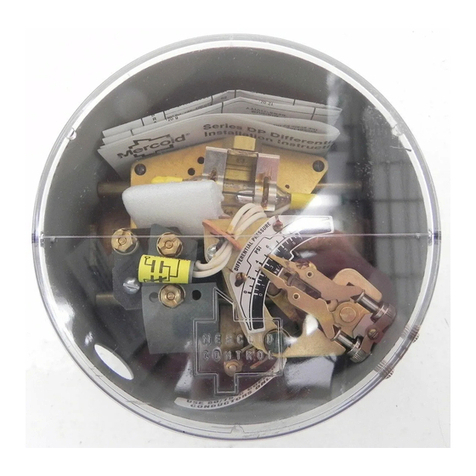
Mercoid
Mercoid PPQ Series User manual
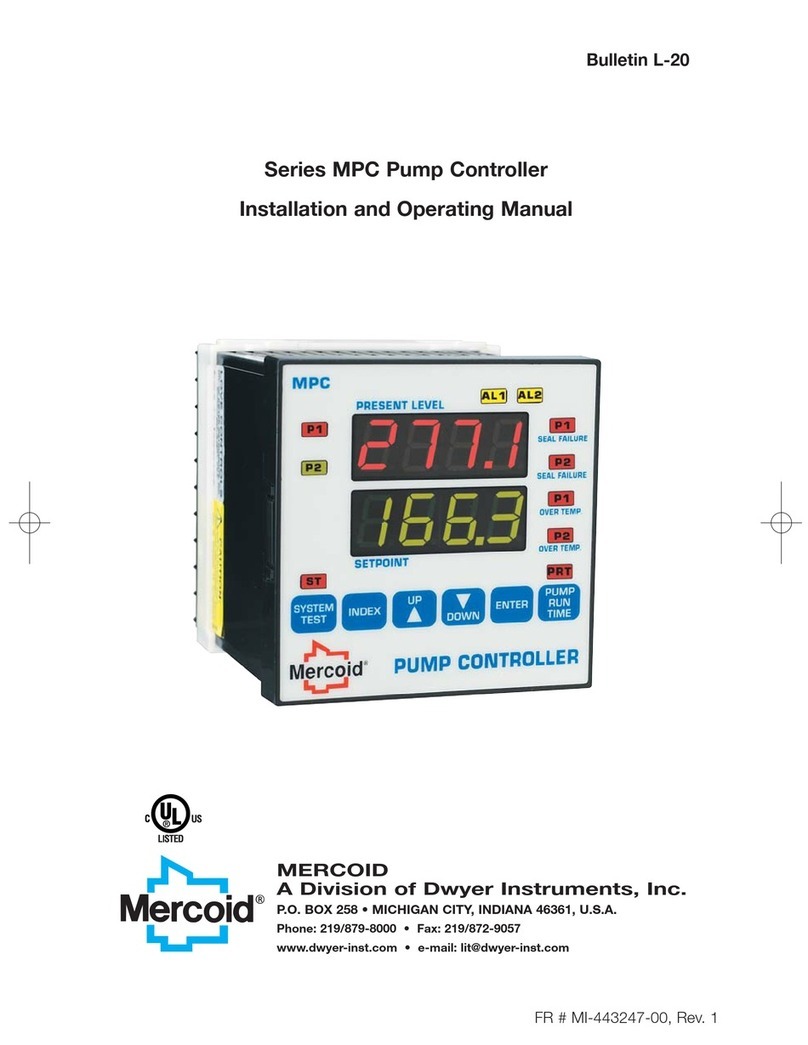
Mercoid
Mercoid Series MPC User manual
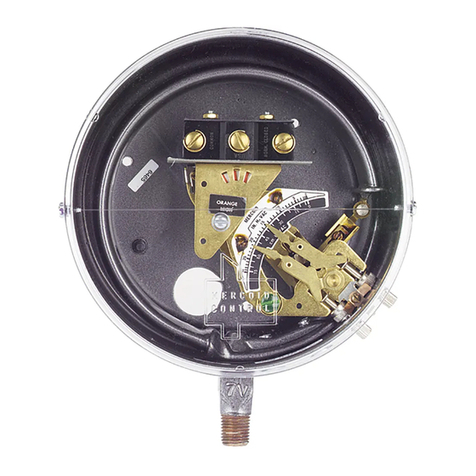
Mercoid
Mercoid D Series Installation and operating instructions
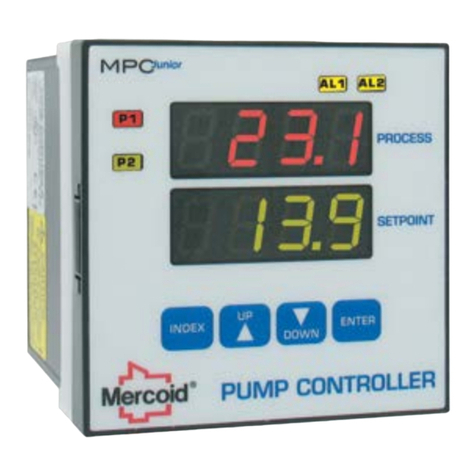
Mercoid
Mercoid MPCJR Series Installation and operating instructions
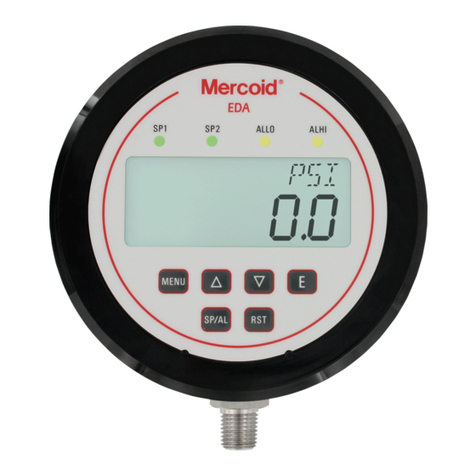
Mercoid
Mercoid EDA series User manual
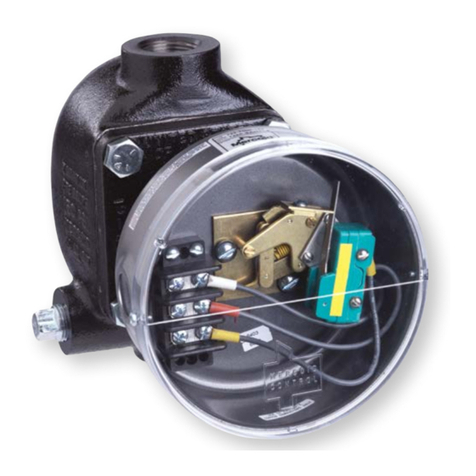
Mercoid
Mercoid 123 Series Installation and operating instructions
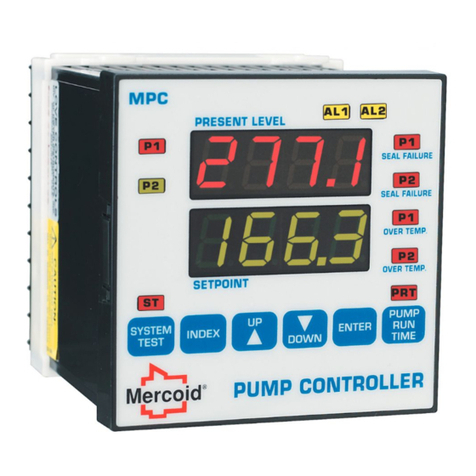
Mercoid
Mercoid Series MPC Installation and operating instructions
